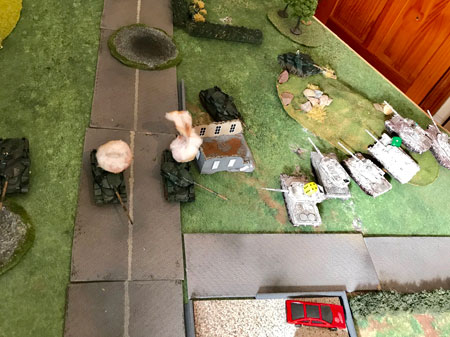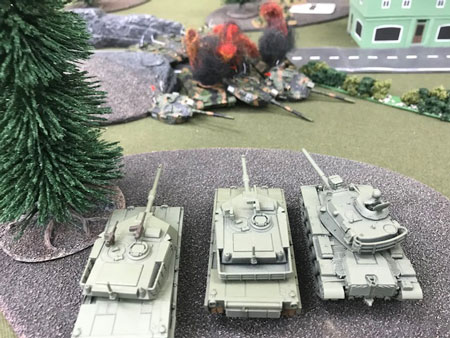|
|
 |
|
|
Firestorm: Stripes Blue-On-Blue
|
Firestorm: Stripes Blue-On-Blue
with Phil Yates
There has been considerable debate about the impact of 'Blue-on-Blue' battle reports (so called because NATO uses blue symbols for friendly forces and red symbols for hostile forces, so a blue-on-blue battle is one between friendly forces).
|
| Blue-on-blue games are usually couched in one of two ways: either they are training between two friendly forces in preparation for the real battles to follow, or they are accidental engagements between two forces on the same side. Training against a friendly unit is very common as it's a great way to assess a force's readiness for battle and how well they've learned the lessons of their training. |
 |
Accidental blue-on-blue engagements are also remarkably common. In the 1991 Gulf War, the majority of Coalition casualties were caused by these incidents. They mostly happened when tired soldiers, under the intense stress of combat, found tanks and troops in front of them and opened fire, convinced that any troops in front of them must be hostile as each unit had its assigned attack corridor. However, when minor errors in navigation led one unit to veer out of their corridor into that of a neighbour, the scene was set for tragedy, especially when both are convinced that they are where they are supposed to be. Incidents of this type are unfortunately frequent in any type of warfare throughout history, and would no doubt have happened if war had broken out in 1985. |
|
As the whole idea of the Firestorm Stripes campaign is to encourage players to play games of Team Yankee, we don't want to exclude players because they can't find an opponent from the other side when they want to play a game. If the alternatives are to play a blue-on-blue game, or no game at all, then playing a blue-on-blue game is definitely preferable in terms of maximising the fun to be had.
Back to the question then: what difference do blue-on-blue games make in the campaign?
|
|
The short answer is that we have been monitoring the relatively small number of blue-on-blue battle reports that have been posted and their effect on the campaign. To date the effect has been minimal, and hasn't impacted the overall narrative of the campaign at all.
As you may be aware, the campaign progresses in a narrative manner, rather than by a simple analysis of wins and losses. Each week the Battlefront staff look at the points scored by each side in each theatre, and then take a look behind the scenes as well. In the reports we use to evaluate progress we take into account the quality of battle reports as well as just the simple fact of win or loss, and check on the impact of blue-on-blue battles. At various points in the campaign we also throw the various national commanders a few twists as well. When all of these are combined, we see how things are going in each theatre and move the campaign forward accordingly.
|
 |
The key takeaway from this then, is that high-quality battle reports have a bigger impact on the campaign than the occasional blue-on-blue battle, so make sure your reports are interesting and fun to read!
~Phil |
|
|
|